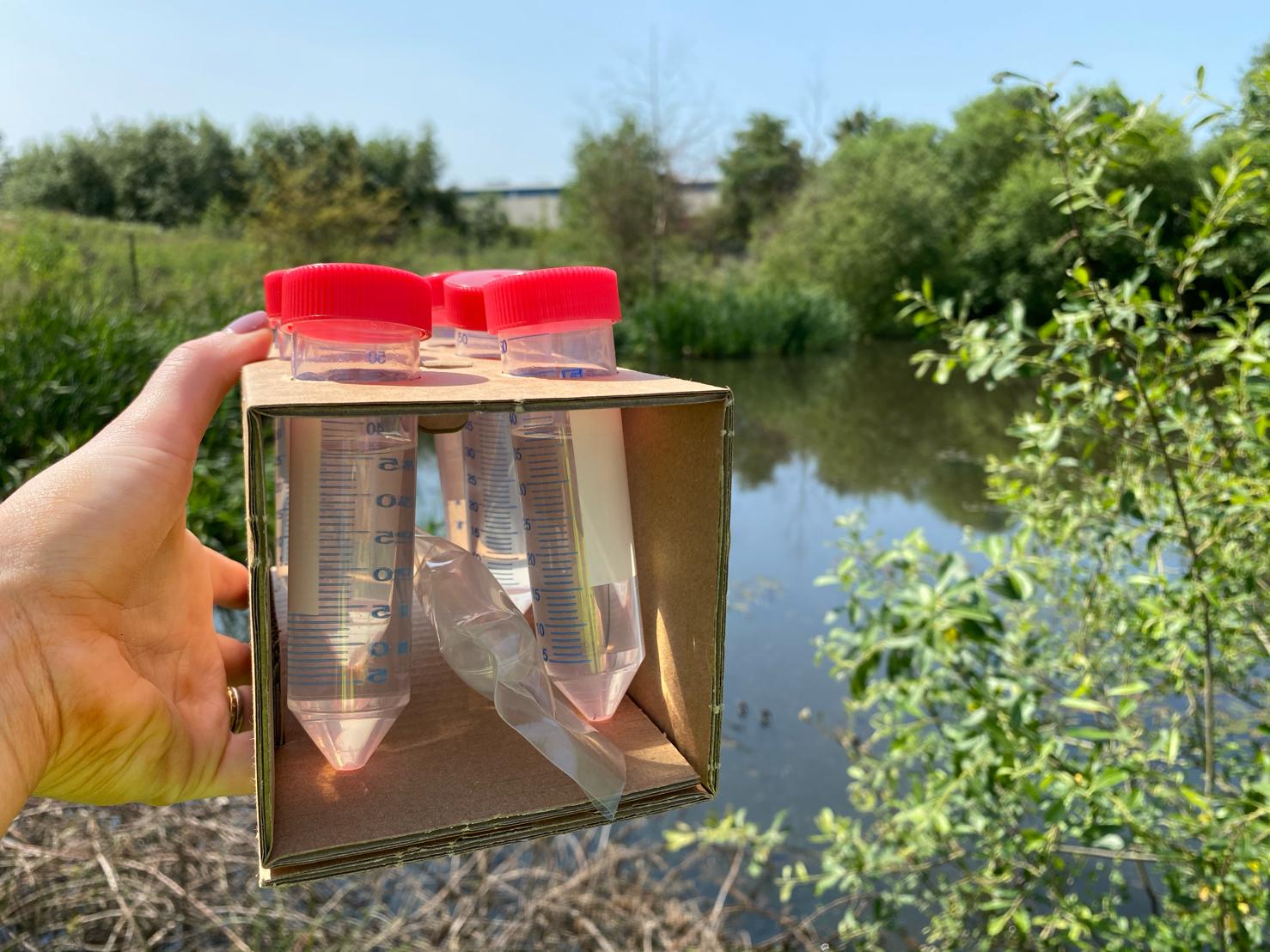Great Crested Newt Survey: Protected Species Surveys
What is a Great Crested Newt Survey?
A Great Crested Newt Survey is a protected species survey method which can be undertaken to detect the presence or absence of Great Crested Newts on or close to a development site. Some traditional survey methods for detecting whether newts are present include torching and pitfall traps and bottle trapping.
EDNA Surveys are a newer survey method which involve the analysis of water samples to determine whether there is environmental DNA from Great Crested Newts present in an environment, such as a pond or other body of water.
The information collected during the survey is used to assess the population and distribution of Great Crested Newts in the surveyed area. This data is crucial for making informed decisions about conservation, land management, and development projects to ensure the protection of this species.
In the UK, great crested newts (GCN) are protected under the Wildlife and Countryside Act 1981 (as amended) and the Presence of Habitats and Species Regulations 2017. Therefore, it is essential for developers to consider the impact that a project will have on great crested newts and mitigate for any negative effects.
Additionally, obtaining the necessary permits or consents may be a legal requirement before conducting a survey that involves handling or disturbing these protected species.
When and Why are Great Crested Newt Surveys Required?
Great Crested Newts are a European protected species (EPS); it is, therefore, an offence to intentionally harm or destroy this type of species or its terrestrial habitat. Surveys for great crested newts are usually required for planning applications for projects which may affect great crested newt populations. Planning applications would then be assessed by local planning authorities.
This type of survey should always be carried out by a qualified and experienced Ecologist with a protected species licence.
A survey for great crested newts should be undertaken if there are suggestions that great crested newts will be impacted by the planned development. This species is likely to be present in areas where there is a freshwater pond or other aquatic habitats within 250 meters of the development site or if the site includes woodland, hedgerows, refuges, scrub, or grassland, and a survey will therefore be required.
If newts are unlikely to be present within an area, or if the planned development would have no impact on the great crested newt population, a survey may not be needed. Local planning authorities are now beginning to request great crested newt surveys more frequently as a way to promote the conservation of habitats for this species.
Great Crested Newt Survey Methodology
There are different types of great crested new surveys, including traditional methods and the newer EDNA surveys. An EDNA survey will detect the presence of great crested newts within a body of water; however, if great crested newts are detected, a full survey using traditional methods will be required to determine population sizes.
Traditional great crested newt survey methods include:
- Pitfall traps
- Netting
- Bottle trapping
- Funnel trapping
- Egg searching in aquatic vegetation
In order to prove the absence of great crested newts on a site, four survey visits will be required. If the species are found to be present on the site, six surveys will be needed to show the number of newts present.
Survey work is limited to specific times of the year. Surveys should be undertaken during breeding season from mid March to mid June. EDNA surveys can take place from mid April to mid June. If surveys are carried out outside of the recommended timings, the results may not be accurate and will not be accepted by Natural England for a planning application.
Great Crested Newt District Licensing Scheme
Many planning authorities now offer district-wide licensing schemes which allows developers to make a conservation payment to cover the restoration or creation of ponds in locations away from the development site.
This scheme is an easier and more efficient method of applying for a great crested newt mitigation license and means that developers are not required to carry out their own great crested newt surveys or mitigation work. In some cases, eDNA surveys will be required to determine great crested newt presence/ absence and confirm eligibility for the scheme.
The main aim of the district level licensing scheme is to address the health of great crested newt populations on a wider landscape scale, in contrast to the current licensing system, which focuses solely on managing and preventing harm to the species on individual development sites.
Natural England has mapped out specific areas which represent the best locations for newt populations to thrive. Habitat creation in these areas will be monitored and maintained for 25 years.
How Can Collington Winter Assist?
Collington Winter are an experienced team of Ecologists, providing great crested newt surveys to developers on all types of projects. We offer both traditional surveys as well as great crested newt EDNA surveys.
Laboratory turnaround on eDNA samples is typically 10 working days but can be expedited under a FastTrack scheme where necessary.
If great crested newts are discovered on a proposed development site, we can also assist by carrying out mitigation and compensation methods.
Our Ecology Director, Olivia Collington, holds a Natural England Great Crested Newt licence and has worked with protected species across the UK, undertaking field surveys and writing scientific reports for submission at planning.
We adopt a pragmatic approach to all sites, working with clients to find solutions and develop relationships. With current offices located in Greater Manchester and Dumfries, the team are well served to work nationwide. Over the years, we have built strong relationships with key stakeholders across the UK.
Please get in touch with our Ecology Director Olivia Collington (Olivia.collington@collingtonwinter.co.uk) for more information on great crested newt surveys and mitigation. We also provide ecological appraisal and assessment services.
Contact Us
Registered Address
23 Bark Street East, 1st Floor, Bolton, BL1 2BQ
Cambridge Office
Future Business Centre, Cambridge Campus, Kings Hedges Road, Cambridge, CB4 2HY
Telephone
Head Office: 01204 939 608
Dumfries Office: 01387 378208


